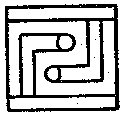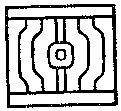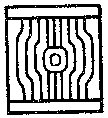I notice that I haven't included in these 'work-book pages' GD11 in my dictionary. I do that now. I do not always agree with what Posnansky writes. For example: "Observe the drawings on hundreds of pieces of ceramics from Tihuanacu, of which a part will be published in the third volume [Was it ever published? I haven't seen it.] of this work. In these it can be seen that the Moon and its satellite the 'Puma' surpassed in rank the Sun with its satellite the 'Wari-Willka' (animal consecrated to the Sun) ..." This is not a valid reasoning. Ceramics are primarily used as drinking vessels or at least for holding fluids. Therefore there are many pictures of the moon on such artifacts. Moon and water belong together in the world of associations. Therefore his evidence has no bearing on his conclusions: "During the First Period of Tihuanacu, when, without doubt, matriarchal customs still persisted, greater importance was given to the moon than to the sun ... " [I, on the other hand, believe that Moon and Sun always has been seen and adored.] However, Posnansky gives us other vital clues, e.g. those 'ideographs' which he calls 'Earth and Sky' respectively 'Moon House' (though he initially regarded them as one sign only):
"... a sign which the author in the first edition of Vol. 1 provisionally called 'Sex' since it was found sometimes in that part of the human or animal body which corresponded to the genitals... Two main groups can be seen in this sign: one formed by angles ... which it was presumed was an ideograph of the 'masculine sex' ... and another group represented by a drawing of curved lines ... which we supposed to be the ideogram of the 'feminine sex'... " |







